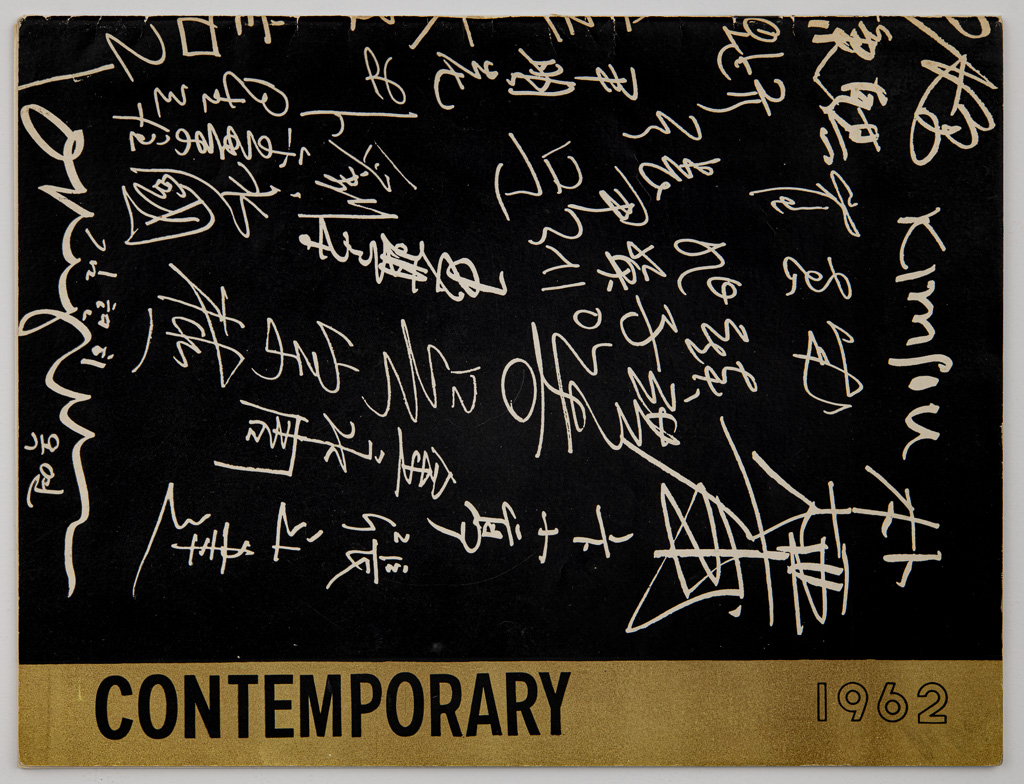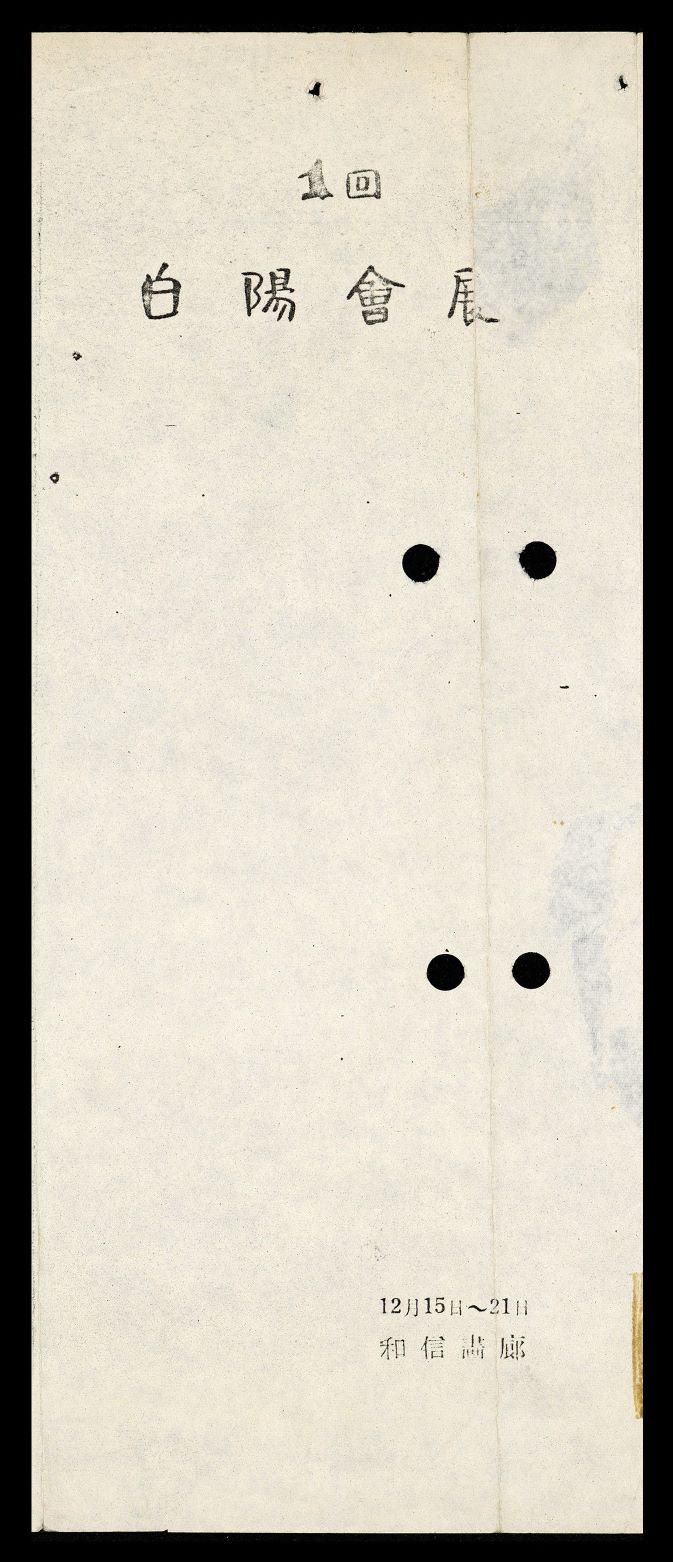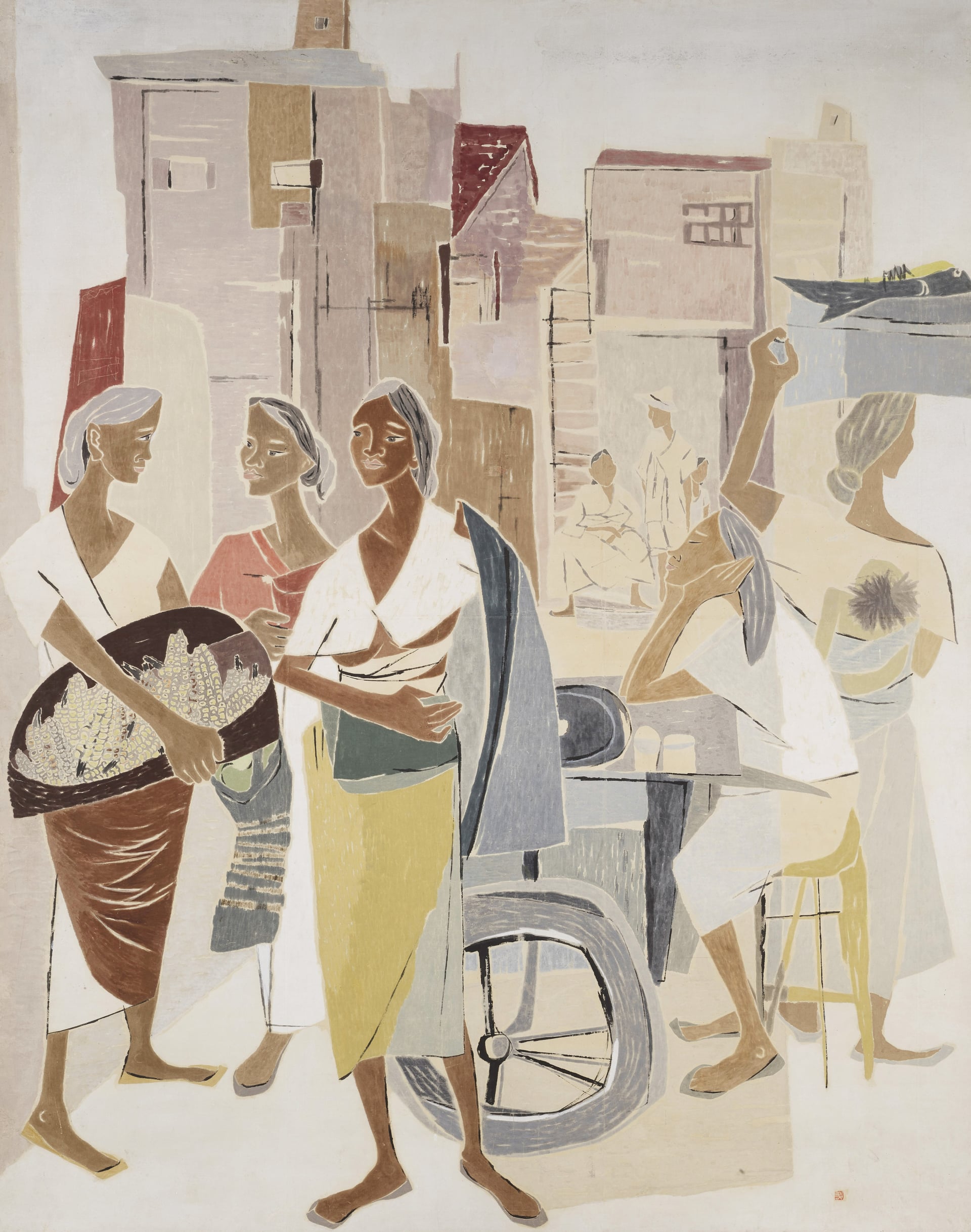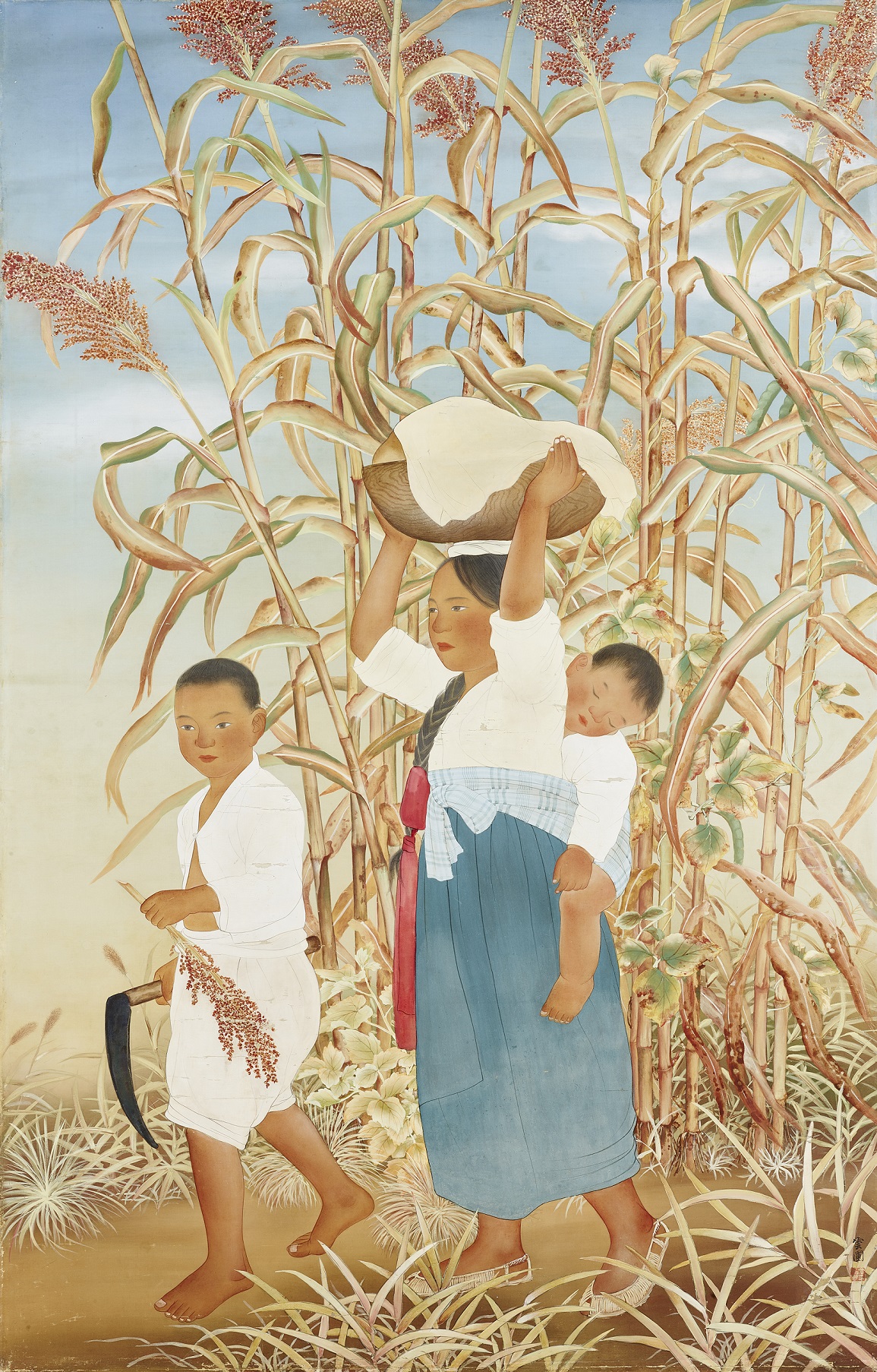
The First Cultural Freedom Contemporary Art Exhibition, Brochure, 1962, MMCA Art Research Center Collection
Congress for Cultural Freedom Invitational Exhibition
* Source: Multilingual Glossary of Korean Art. Korea Arts Management Service
Related
-

Paek Yang Painting Association
An art group formed in 1957 to explore new perspectives on Korean paintings and educate future artists. The group was formed by nine artists including Kim Kichang and Park Rehyun of the Husohoe (who were students of Kim Eunho, also known by his pen name I-dang), Kim Youngki, and Chun Kyungja. In January 1961, the group organized a touring exhibition in Southeast Asia, which is noteworthy as the first overseas exhibition held by a Korean private-sector art organization. In this traveling exhibition, the term “hangukwa (Korean painting)” was used for the first time to refer to traditional ink painting, instead of the previously dominant term “Eastern painting.”
-

Park Rehyun
Park Rehyun (1920-1976, pen name Woohyang) studied at Gyeongseong girls Normal School and graduated from the Department of Japanese Painting at Tokyo Women’s Art School in 1944. She studied at the Pratt Institute in New York and Bob Blackburn’s Print Studio from 1969 to 1973. After she married Kim Kichang, she held several solo and collaborative exhibitions with her husband and contributed her works to Paek Yang Fine Art Exhibition. She won a Changdeokgung Palace Award at the Joseon Art Exhibition [Joseon misul jeollamhoe] in 1943, a President Award at the fifth National Art Exhibition (Gukjeon) in 1956, a President Award at the eighth Great Korean Art Association Exhibition in 1956, and a Shin Saimdang Award in 1974. During the colonial period, Park Rehyun produced Japanese style color portraits, then, after independence she moved toward a semi-abstract technique, often featuring the three-dimensional formal interpretation of objects and a division of planes and using traditional Oriental painting materials. In the 1960s, she gradually replaced this approach with a splashed ink and pre-dyeing effect. Then, after moving to the U.S., she expanded her oeuvre to include print and tapestry.
-

Kim Kichang
Kim Kichang (1913-2001, pen name Unpo or Unbo) studied Eastern painting at Kim Eunho’s art studio Nakcheongheon. After his debut in the tenth Joseon Art Exhibition [Joseon misul jeollamhoe] in 1931, he won special selections from 1937 to 1940, and became a renowned painter. He was appointed as the first president of Paek Yang Painting Association and became a professor at Hongik University and Soodo Women's Teachers College. He was awarded the Order of Civil Merit, Peony Medal in 1981 and the Korean Art Academy Award in 1983. After he passed away in 2001, he was awarded a posthumous Geumgwan Order of Culture Merit award. Although Kim initially focused on colorful figure paintings, following in the legacy of his mentor Kim Eunho, in his later career he collaborated with his wife Park Rehyun to modernize Korean painting by adopting cubism and abstraction. He reinterpreted traditional folk paintings in his representative works, such as Blue-green Landscape Painting series started in the 1970s and his Fool’s Landscape Painting in the 1980s and was inspired by portraits of historical figures. He contributed to the development of Korean modern art by working in an expanded formal territory from figuration to abstraction and addressing subject matter from folk painting, to figure and landscape painting.
Find More
-

Eight American Artists
A travelling exhibition organized by the Seattle Art Museum that was held in Asia and Europe. In Korea, the exhibition was held from April 9 to 21, 1957 at the National Museum at Seokjojeon in Deoksugung, the present location of the Deoksugung Museum. The United States Information Service in Korea supported the exhibition. The exhibition featured 30 paintings by four abstract artists: Mark Tobey, Morris Graves, Kenneth Callahan, and Guy Anderson, and 10 metalwork sculptures by four sculptors: Rhys Caparn, David Hare, Seymour Lipton, and Ezio Martinelli. The exhibition introduced contemporary American art to the Korean art community, and it influenced the development of Korean abstract art.
-

United States Information Service
An organization under the United States Information Agency that was responsible for the overseas promotion of the policy and culture of the USA. In Korea, the service established its headquarters at Bando Hotel in 1948, and regional branches in major cities such as Busan, Cheongju, Jeonju, Gwangju, Daegu, and Jeju City. The service’s operations included English education, media screenings, publishing, and exhibitions. During the 1950s, when the United States began to harness the potential of culture in relation to Cold War politics, the service supported exhibitions such as the Eight American Artists and the Family of Man exhibition. The service greatly influenced the Korean art community during the period of military rule until 1987, which had little other opportunity for exposure to overseas art.






